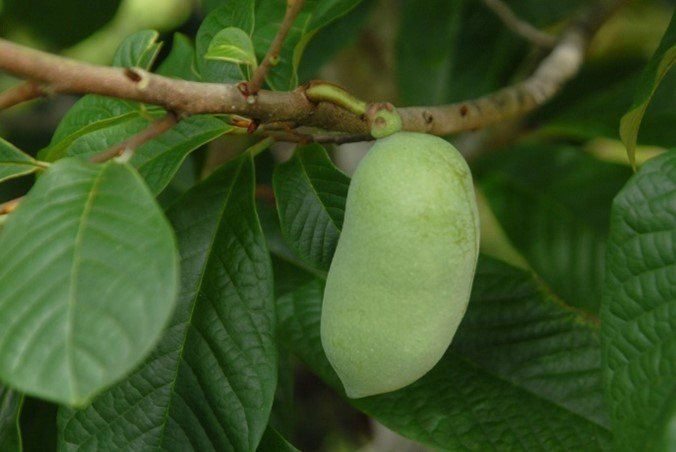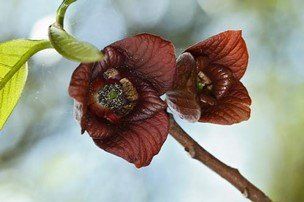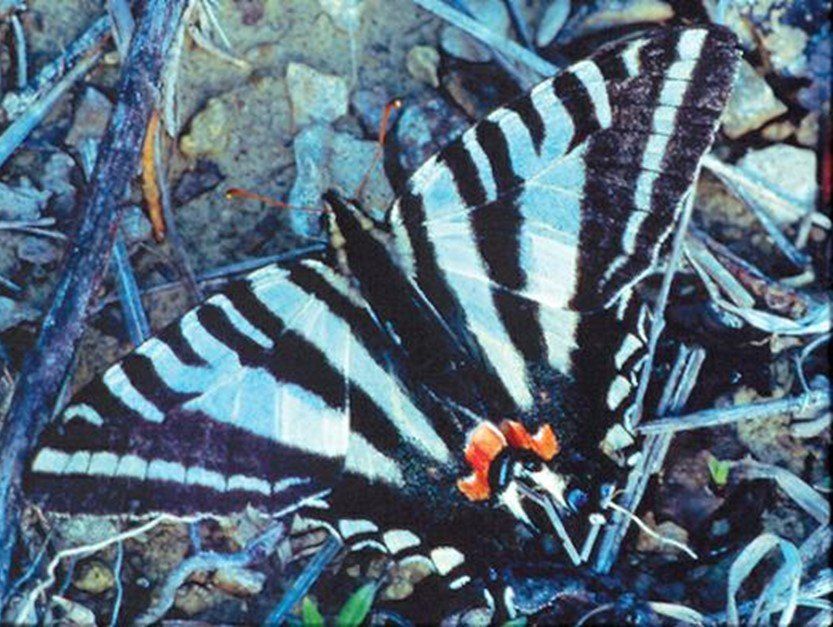The (Slightly More) Definitive Word on Pawpaw Trees
After the pawpaw question was raised at our last membership meeting, I did some online research into the propagation of the pawpaw tree. The pawpaw, Asimina trilobas, is an understory tree native to the eastern United States and parts of Canada, growing best in hardiness zones 5 to 8, so we are on the southern edge of its preferred geographic area.
Much of the research on pawpaws is being done in the Midwest, with a major research effort at Kentucky State University through their Cooperative Extension program. Their pawpaw planting guide starts with a disclaimer, “Very little scientific research has been done on Pawpaw. The advice given here is based partly on research and partly on the experiences of many Pawpaw growers.” Most of the information I found online from Kentucky State University is from the early 2000s.
So, do you really need to plant two pawpaw trees to produce fruit? According to the Kentucky State University experts, you need to plant two trees for cross-pollination, from two different cultivars or seedlings. The pawpaw flower cannot be self-pollinated because the stigma ripens before the pollen. The botanical term for this is protogynous (from the Greek roots for first and woman). By the time the pollen is shed, there is no place for it to go. Also, pawpaw trees usually require pollen from a genetically different tree to be fertilized—they are self-incompatible. If the trees that are being planted are from grafts, they will not be genetically different. If they are from seedlings, they most likely will be different. Pawpaw trees may produce many suckers, forming clusters of cloned trees with poor fruit production.

Pawpaw flowers are small and reddish brown or maroon, appearing in early spring, before the trees leaf out, and have a slightly rotten smell to attract the beetles and flies that are their primary pollinators. At one time it was recommended to hang roadkill in pawpaw trees to attract these pollinators. Most of the recent articles I have read recommend hand pollination rather than roadkill to ensure good fruit set.

Pawpaw trees have few natural pests. The zebra swallowtail caterpillar, Protographium marcellus, can be considered a pest since it feeds on the young leaves, but, as the Kentucky State University report says, “the adult butterfly is of such great beauty that this should be thought more a blessing than a curse.”


So, how many pawpaw trees do you really need in order to produce fruit? You need two genetically different trees, except sometimes one is sufficient and sometimes two is not sufficient. Ongoing research is working to develop improved cultivars with greater fruit productivity and to increase genetic diversity. In the meantime, find a friend with a pawpaw tree and practice hand pollination. Or just sit back and enjoy the beautiful zebra swallowtails that come to your tree.
Read more about the pawpaw and its usefulness as a fruit tree and a butterfly host plant at Pawpaws And The Zebra Swallowtail Butterfly - Virginia Native Plant Society (vnps.org)

